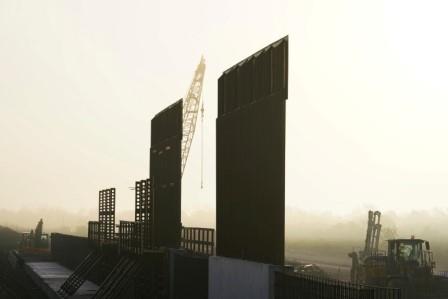WASHINGTON- The Pentagon has received a request from within the Trump administration to build roughly 270 miles (435 km) of wall on the border with Mexico and is evaluating its cost and viability, a senior Defense Department official said on Thursday.
The disclosure of the request by the Department of Homeland Security (DHS) sets up another showdown with Democrats in Congress, who oppose President Donald Trump’s past diversion of billions of dollars in military spending to bolster security on the border.
The senior U.S. official, who spoke on condition of anonymity, declined to speculate on the costs of the project but noted it would be paid for out of Pentagon authorities to counter drug smuggling.
The Washington Post on Monday reported internal Trump administration deliberations for a $7.2 billion request.
The Trump administration has vowed to build at least 400 miles (644 km) of wall along the border by November 2020, when Trump will be up for re-election. In his 2016 campaign, Trump said Mexico would pay for the wall. The Mexican government has refused to do so.
Defense Secretary Mark Esper signalled earlier this week he would not oppose some new diversion of funds for border wall construction, saying the border was a security issue and that the Pentagon was committed to supporting DHS’ mission.
“If that’s what it takes, we are prepared to support,” Esper said.
The official, who spoke on condition of anonymity, said the Pentagon’s review would probably take two weeks and noted that past requests by DHS for border wall construction had only been partially fulfilled by the Defense Department.
The Trump administration has constructed nearly 100 miles (160 km) of border wall, according to U.S. Customs and Border Protection statistics current to late December. All of those barriers replaced existing structures, the agency said.
The Pentagon’s review of the DHS request would include a legal review by Defense Department attorneys as well as a feasibility review by the Army Corps of Engineers.
“Sometimes when we get these areas, they’re not constructable or it’s difficult to do that at certain points,” the official said. “Then funding decisions are assessed simultaneous with that.”
It was unclear when any construction might begin, but the official noted that any funding for it would need to be spent by Sept. 30, when the fiscal year ends.
The military’s Joint Staff would also provide an assessment to determine any impact the project might have on military readiness, presumably because of the diversion of funds. Such projects are not built by soldiers but contracted out to private industry.
(Content and photos syndicated via Reuters)













